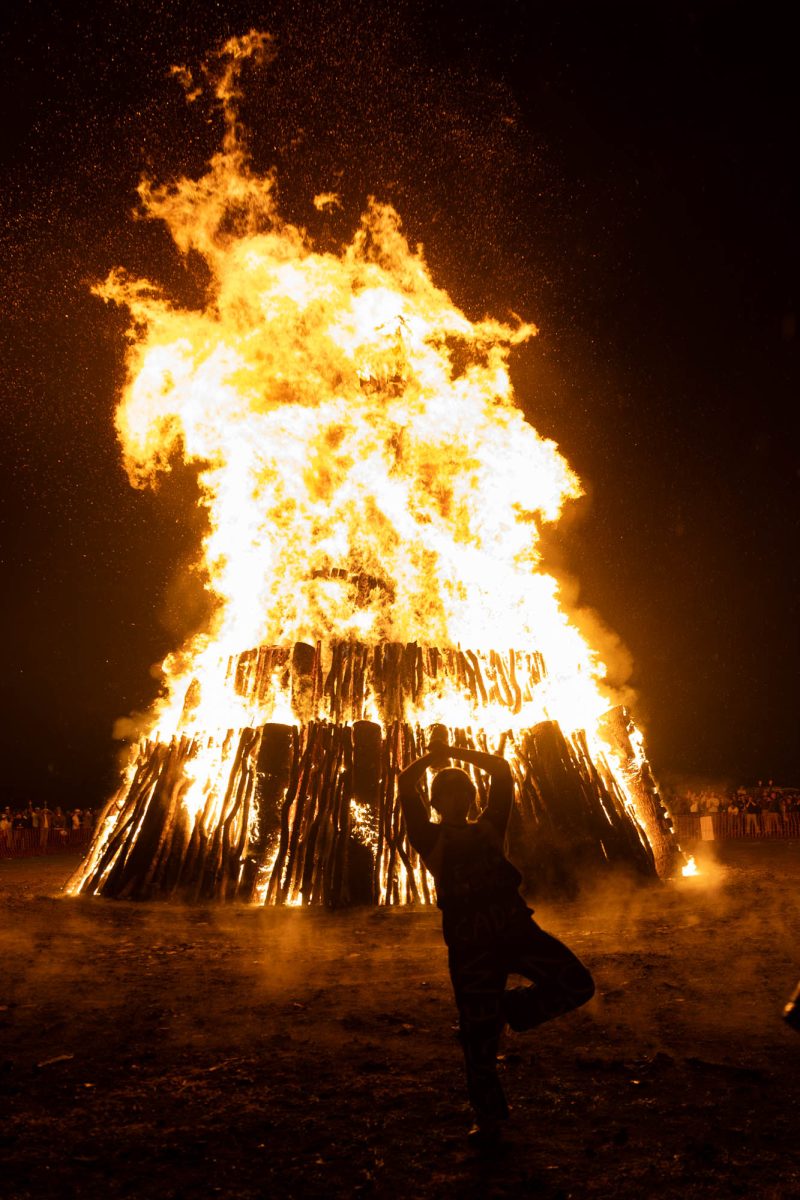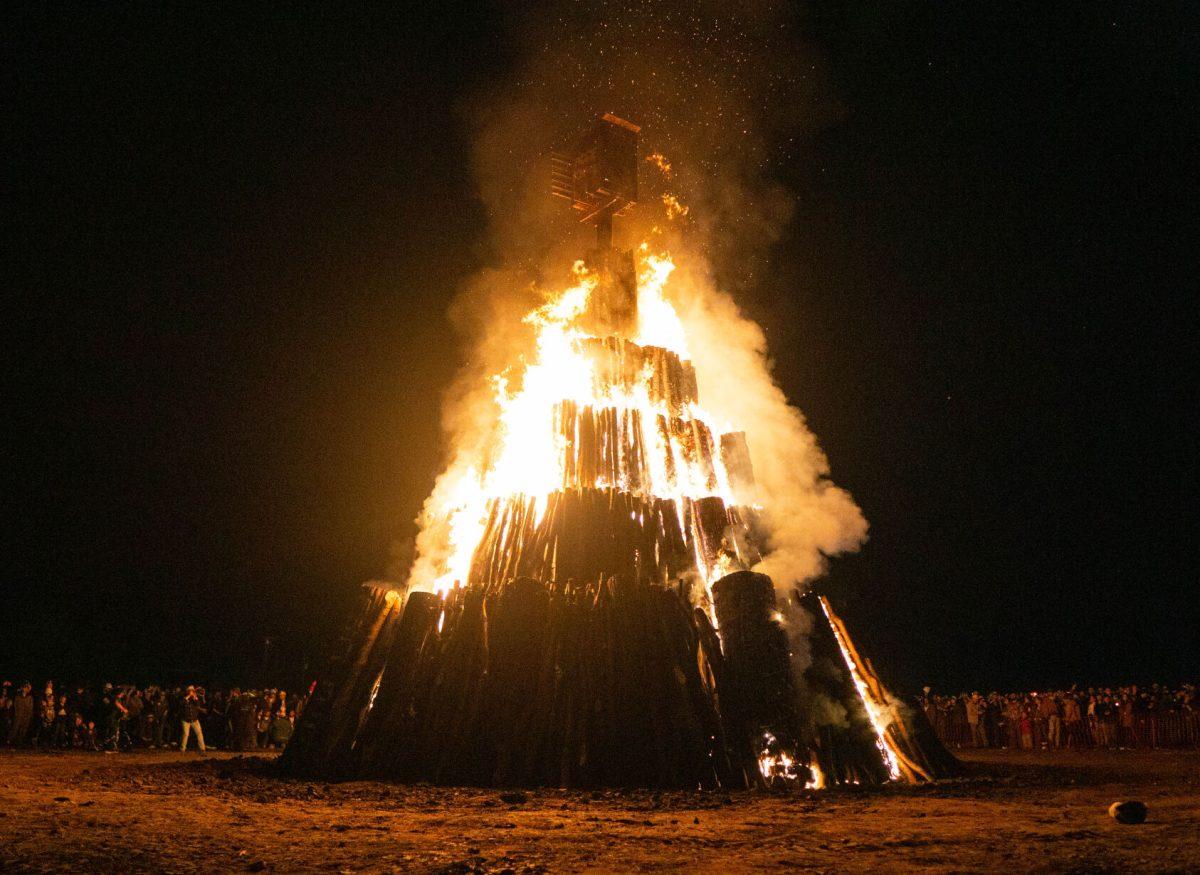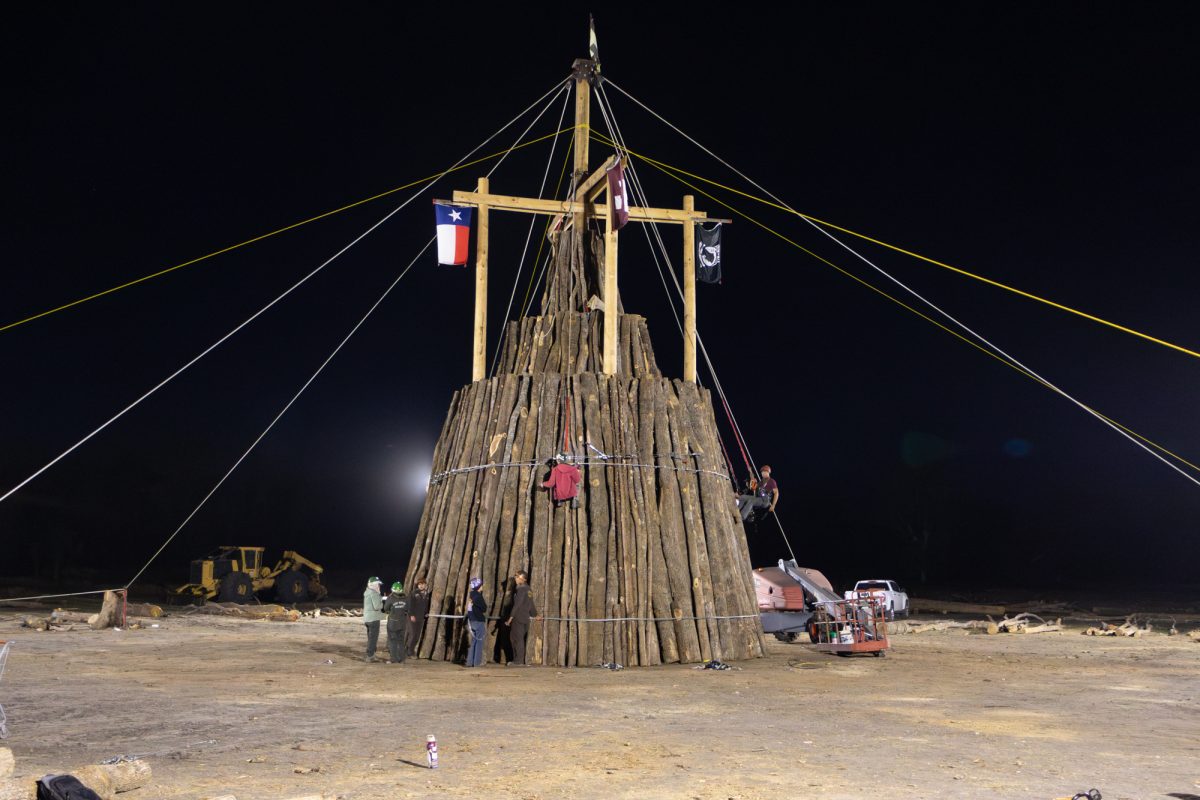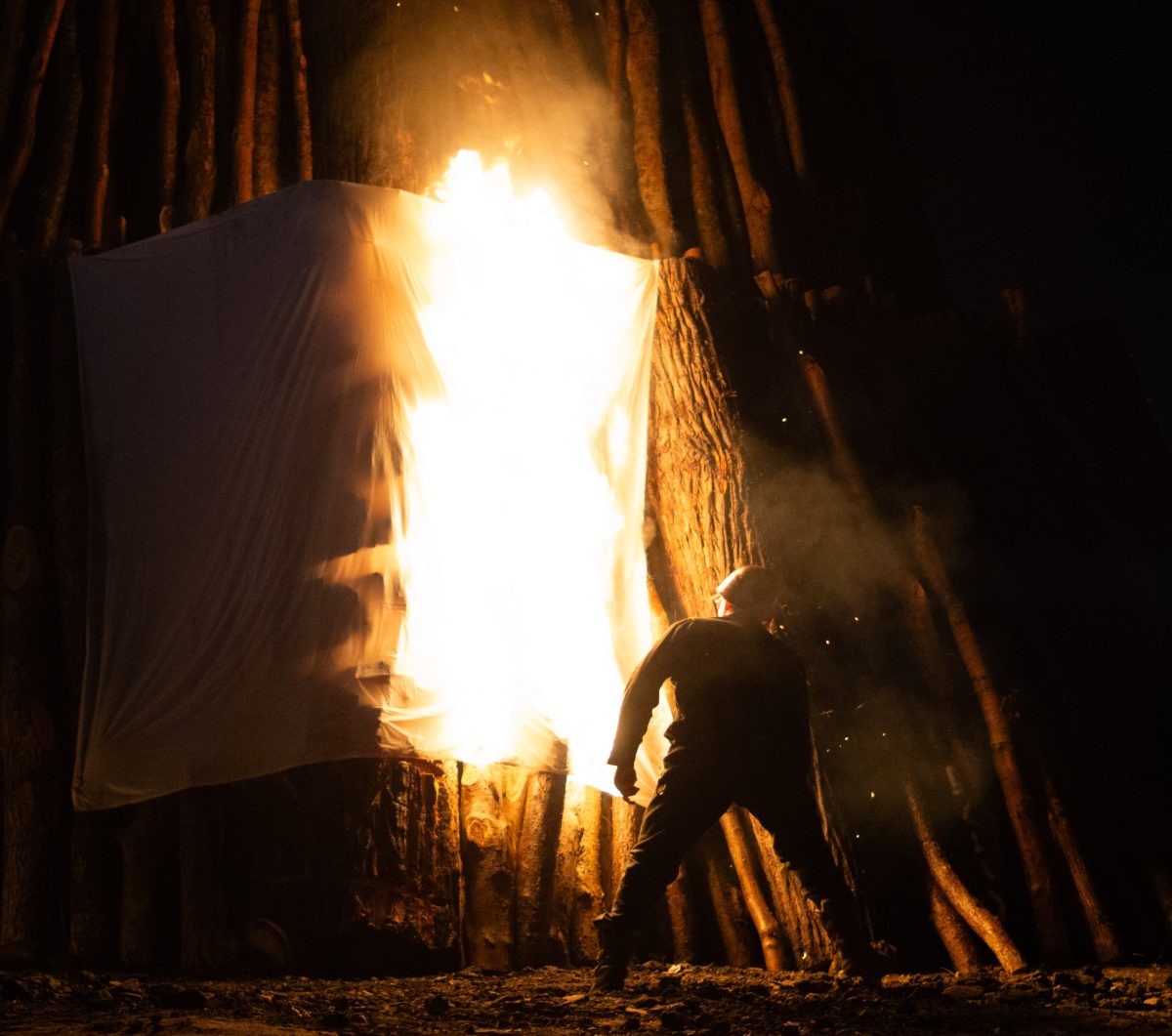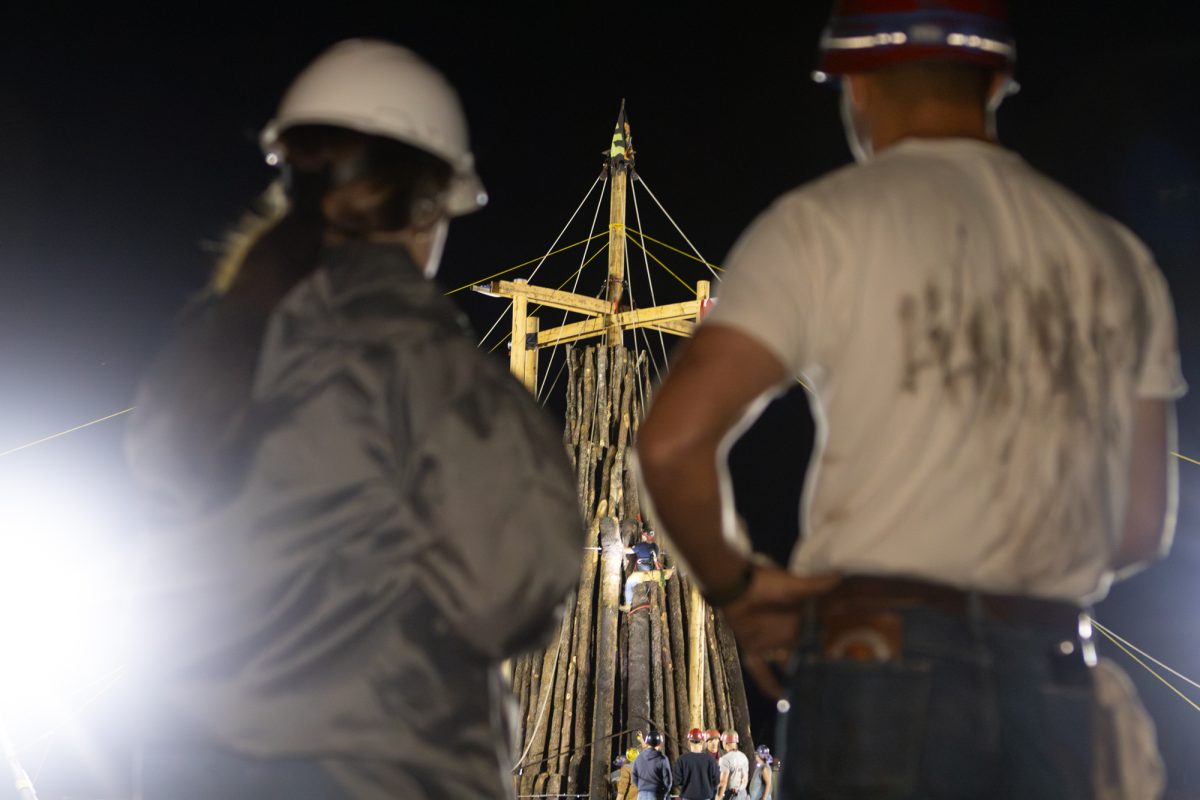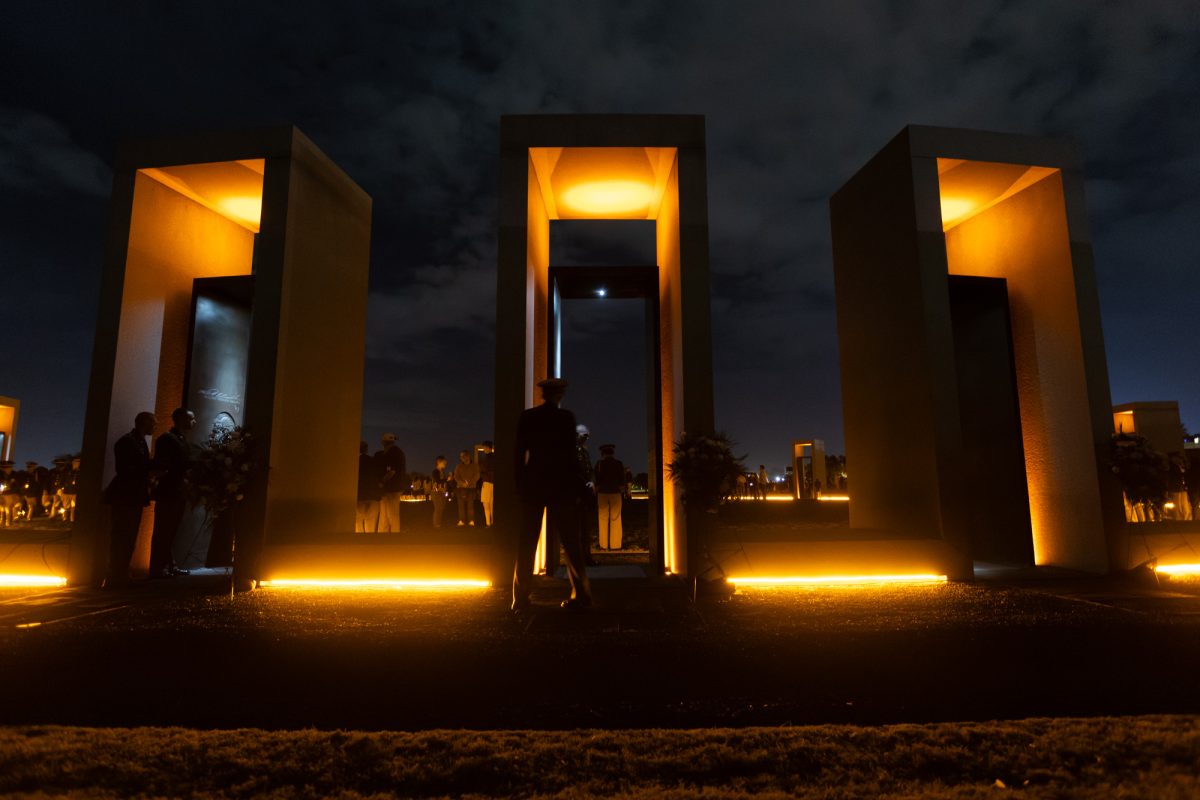The items left at Bonfire after Stack fell symbolized the mourning, love and unity of the Aggie family. People left letters, poems, flowers, teddy bears, pots, clothes and Aggie rings to remember and celebrate the lives of the 12 Aggies killed in the 1999 Aggie Bonfire Collapse.
The collection of items left at Stack in the days after the tragedy have been curated in a Cushing Library memorabilia collection since the Bonfire Memorabilia Project gave the collection to Cushing for safe storage in 2006.
Robin Hutchison, collections curator for the Cushing Memorial Library and Archives, said it was emotionally draining to work with the collection in the months following the collapse as she dealt with her own grief.
“Every item we touched spoke of loss and of someone’s pain and we felt a great deal of responsibility to try to preserve the weather-damaged items and the feelings and thoughts they contained,” Hutchison said.
Hutchison said the notes and letters left behind stand out among the memorabilia collection.
“Especially the letters and cards from young school-aged children who were just learning to write and just beginning to understand what it means to be a person in the larger world,” Hutchison said.
Hutchison said there was a clear struggle in the children’s drawings and letters as they tried to express feelings and sympathy about something they did not quite understand, but wanting to show support.
Jennifer Jones Barbour, instructional assistant professor of communication, said Aggie rings were left at the site. All were identifiable — except one.
“Someone literally scratched out that identifying mark,” Jones Barbour said. “It commemorates your time here, but it also is what signals your community identity.”
Students leaving their Aggie rings at the site symbolized their emotion of losing a part of their family.
“That moment of tragedy, where it felt like the entire fabric of A&M community is torn apart — it makes sense then that the ring becomes something that symbolizes my kind of emotion regarding that tragedy,” Jones Barbour said.
Jones Barbour said spontaneous shrines are not uncommon after a tragedy.
“We used to leave stuff at gravesites, but now we leave them at the site of death,” Jones Barbour said.
Hutchison said that it has become a bit easier for her to work with the collection and that it is an honor and great responsibility for Cushing to take care of the collection.
“Each time I do a condition check of the materials, the sights, sounds and feelings of that time of loss still flood back,” Hutchison said. “But with time I have learned to see another side of what the memorabilia represents.”
Hutchison said she tries to focus on the tremendous outpouring of support the memorabilia embodies.
“Support not only from the Aggie family for each other, but from people around the state and the country who saw people in pain and in need and responded,” Hutchison said.
Hutchison said it was decided out of respect that the memorabilia would be left at the site for a time before being collected, which led to some weather damage.
“Anything that was collected from the site was damp, muddy and in many cases moldy,” Hutchison said.
Hutchison said she and a colleague spent months attempting to dry and clean the items before sending them to the Department of Anthropology for full documentation.
“Within a few days of the collapse, the university archivist and several other Cushing employees including myself, met with Sylvia Grider from the anthropology department and campus leaders to create a plan that would ensure the preservation of the remembrances left at the Bonfire site,” Hutchison said.
Cushing was involved with the Bonfire Memorabilia collection from the start. At the time, Cushing held the preservation unit for the A&M libraries and was tasked with stabilizing the materials, Hutchison said.
“Anthropology, under the leadership of Dr. Grider, who would become the director of the Bonfire Memorabilia Project, was charged with collecting and documenting the materials for study,” Hutchison said.
Grider formed the protocols for collecting the memorabilia, as none existed at the time Stack fell, Jones Barbour said.
“[Grider] actually worked with Virginia Tech because after their shooting they had similar kind of bunch of memorabilia left behind — so how do we protect that and save that? So she’s worked with Virginia Tech and other schools who have faced similar things,” Jones Barbour said.
Even today, remembrances are still left at Bonfire Memorial.
“I now choose to see the items in the collection as proof of the goodness and compassion that exists in people’s hearts,” Hutchison said.
The items left behind: Cushing maintains collection of memorabilia left at Stack
November 17, 2014
0
Donate to The Battalion
$2065
$5000
Contributed
Our Goal
Your donation will support the student journalists of Texas A&M University - College Station. Your contribution will allow us to purchase equipment and cover our annual website hosting costs, in addition to paying freelance staffers for their work, travel costs for coverage and more!
More to Discover




